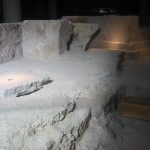The Association agrees to the incorporation of Grenada and to promote collaboration among the members of the network.

The mayor Joanma Miguel and the councilor of UNESCO Creative City of Llíria, Paco Garcia, along with the technician of Tourism of the town, participated this week in the first assembly of the Spanish Association of UNESCO Creative Cities held in the Valencian town of Manises.
Once the association was formed with the first four members Denia, Manises, Llíria and Burgos, the first assembly has been proposed to amend the statutes to facilitate the entry of more Spanish cities and thus to encourage the incorporation of new members. The next member to join the association will be Granada.
In this new meeting it has been discussed the new meeting of Spanish Creative Cities 2023, which will take place after the summer in the city of Valladolid, as well as the commitment to make a public presentation of the Association with the impetus of the national commission of UNESCO and the Ministry of Culture to Madrid.
Likewise, another of the points that has been discussed is to draw up a calendar of collaborative activities between the members of the Association and the Spanish Creative Cities of the UNESCO Network.
The Creative Cities Network was launched by UNESCO in October 2004, following the decision taken by the 170th Executive Board. It aims to stimulate international cooperation between cities that invest in creativity as a driver of sustainable urban development, social inclusion and cultural influence, thus promoting the pursuit on the ground of UNESCO’s objectives regarding cultural diversity.
Among the Spanish Creative Cities are: Seville (Music, 2006), Bilbao (Design, 2014), Granada (Literature, 2014), Burgos (Gastronomy, 2015), Dénia (Gastronomy, 2015), Barcelona (Literature, 2015), Terrassa (Cinema, 2017), Llíria (Music, 2019), Valladolid (Cinema, 2019) and Manises (Crafts and Popular Arts, 2021).








